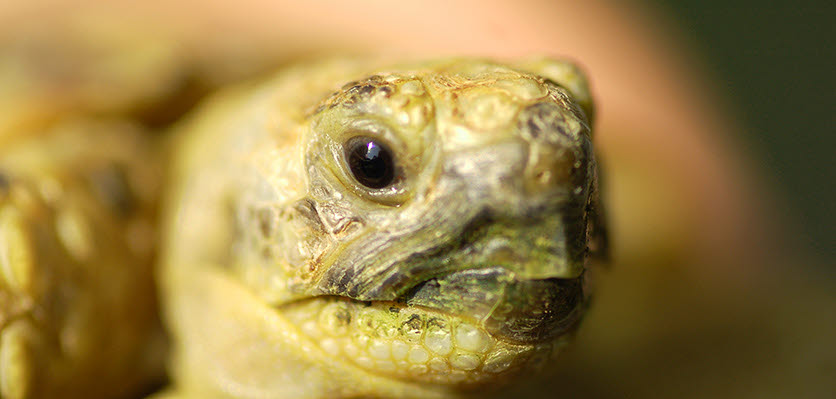
Last month the turtle featured on front cover of the Australian Veterinary Journal highlighted a report on a mortality event in Johnstone River Turtles in Queensland.1 One of the co-authors of that study, Ph.D. student Wytamma T Wirth gives us a bit more background on her work with the Turtle Health Team, which is led by Associate Professor Ellen Ariel.
The turtle on the cover was an Emydura macquarii krefftii hatchling, a leftover from my animal model development and recently released into the Ross River. I collected gravid turtles from the wild and induced them to lay their eggs at the [James Cook] University’s veterinary school. After about a month of incubation, during a tropical thunderstorm, the first eggs began to crack open. Greater than 95% of the eggs hatched and I was fortunate to also get an egg with two turtles inside (one being a rare parasitic twin). Being a parasitic twin is certainly bad because it does not survive, but the healthy twin appears normal.
At JCU we have a great turtle research facility, affectionately known as the Caraplace. I raised this hatchling (with the lovely name of F5) and the others in the Caraplace with the help of many volunteers, for which I am grateful. I have had a lot of fun working with these turtles; they are a species filled with personality. They display a range of different behaviours: some are shy, some playful and others are fighters. We also had a group of escape artists: on the basking platform these turtles stacked up on top of each other to form a tower up to the edge of their tank (similar to the turtles of Dr. Seuss’ ‘Yertle the Turtle’). Thankfully none of them got very far and we quickly wised up to their attempts.
My Ph.D. is focused on ranaviruses and Australian freshwater turtles, although I’m also doing some work with other hosts (e.g. frogs) and viruses (e.g. herpesvirus). My project breaks down into three main areas: a sero-molecular survey looking for viral DNA and antibodies in turtle populations and species in north-east Queensland; a study comparing and characterising the innate immune activity of these species and populations; and thirdly, the development of an animal model for studying ranaviral infection in Australian freshwater turtles that are members of the Chelidae.
The animals are really helping us understand Australian ranavirus, a topic we know little about. Despite their name ranaviruses do not only infect frogs, they can also infect fish and reptile species and some invertebrates. Several cases have been documented of ranaviral infections in turtles, tortoises, and terrapins around the world; however, our knowledge of how these viruses affect our native turtles is virtually unknown. In the US, turtles with ranaviral infections present with lethargy, respiratory distress, and oedema of the soft tissues. Histologically they have multifocal necrosis in multiple organs, often associated with haematopoietic tissues. The problem is that the US turtles belong to a different suborder to the freshwater turtles of Australia (they are more divergent than mice and elephants, as the two groups of turtles split over 150 million years ago). On top of that, the ranavirus species found in the US and other parts of the world are generally different to those found in Australia.
I used my animal model to try to answer some of these unknowns about the pathology of Australian ranaviral infection in Australian freshwater turtles. Unfortunately, this meant that the hatchlings used in the model were euthanised at the end of the trial, but we now have a much better understanding of the pathology in our turtles. This information will be useful for veterinarians and wildlife workers to identify ranavirus infections, aid in the development of diagnostics and help us identify wild populations at risk of ranavirus infection. The hatchlings not used in the model were released back into the Ross River.
Disease in Australian freshwater turtles is still poorly understood. For example, the Bellinger River snapping turtle almost went extinct from a recent novel viral infection. We need to invest more in our native species to help protect them in the long run.
Reference
- Ariel E, Freeman AB, Elliott E et al. An unusual mortality event in Johnstone River snapping turtles lseya irwini (Johnstone) in Far North Queensland, Australia. Aust Vet J 2017;95:355–361.
This article appeared in the November 2017 issue of the Australian Veterinary Journal
